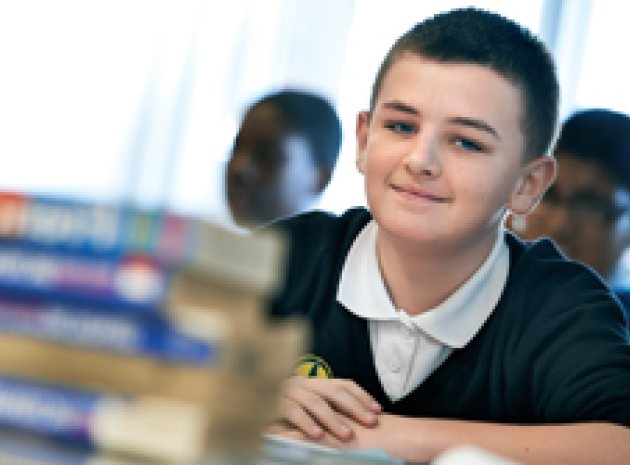Internet translators, although they have their uses, have become the bane of all language teachers’ lives, creating an array of oddly constructed sentences, such as “Yo reloj la tele en mi desinflado” (which took me a good ten minutes to decipher). Many language learners rely on the internet due to the fact that they have never been taught the importance of good dictionary skills, nor how to develop them. However, the ability to use a dictionary well can create some exceptional and high level work – so here are a few ideas to help middle to high ability Year 8 Spanish students understand the importance of mastering this skill, and also allow them to recognise some of the pitfalls of the internet translator.
STARTER ACTIVITIES
Do-now exercise
As they enter the room, students are given a Spanish word on a slip of paper (each learner has a different word). They must use the dictionary to determine what category of word it is (noun/verb/adjective etc…), before placing the word on the board under the relevant heading determined by the teacher. This process encourages students to check dictionary codes and helps them differentiate between different words.
Odd one out
Students are given a sheet that contains five or six sets of three words, from which they need to decide which is the odd one out (for example: perro / camisa / estuche), using the dictionary, and explaining their answer. In order to do this they can either refer to the meaning of the words, or they can simply look at the codes identifying whether the word is masculine or feminine. A differentiated version could be created to include verbs or adjectives (gato / bufanda / salgo). This will aid higher ability students in understanding the importance of accurate language and grammar manipulation.
A small extension task could be to have students create their own set of words for a peer to complete
MAIN ACTIVITIES
1. Off the page
Being able to recognise words in a dictionary is one thing, but putting this into practice is often where work gets (literally) lost in translation. A very useful and fun activity for students is to create their own sentences using specific page numbers from the dictionary. All students are provided with a list of connectives and their meaning, along with a list of ten page numbers from the dictionary. The aim is to create a sentence using only words from the pages specified. Learners can alter the adjectives or conjugate any of the verbs, but they must only use the pages provided. This encourages students to be more thorough and precise in their dictionary search.
The sentences can be based on a specific topic or as random and creative as they like; the only rule is that they must be grammatically accurate. Once learners have completed their sentences they then give their work to a partner who has to reverse the process and translate them back into English – if a sentence doesn’t make sense, it is returned to the creator for him or her to rectify.
This process is beneficial as it helps learners be much more precise in their dictionary use and it promotes the use of the dictionary’s grammar section, which is a vital skill, especially at GCSE.
2. Same difference
A good way to highlight the importance of effective dictionary skills is to give students a selection of sentences that contain the same word with a different meaning, for example: The dove dove off a cliff or She wound the bandage around the wound. This activity will not only help students differentiate between verbs and nouns, but it is also a great way to encourage them to cross-reference words, as they will need to refer back to the verb in its infinitive form to ascertain the meaning. Whilst the expectation will be for all students to translate the key word, the more able in the group could also attempt to translate the entire sentence.
This is also a great way to highlight the complications of the English tongue to some of the more reluctant language learners, who think that English is easy!
SUMMARY
To finish a lesson on dictionary skills you could either focus on extending sentences or using students’ newly honed skills to spot the mistake.
To extend sentences, students can work in groups and their task is to create the longest possible sentence using one page from the dictionary. They then need to write their sentence on a large piece of A3 or sugar paper. The following lesson, the pieces of paper could be stuck to walls around the room and the starter could be for all groups to make their way around the room (equipped with their dictionaries) attempting to translate the sentences back into grammatically correct English in the quickest time possible. Alternatively, use the IWB and mini whiteboards to have students spot the mistake. You will need to create a selection of simple Spanish sentences, which are then individually displayed on the IWB. Each one must include a word that has been incorrectly translated – perhaps from a homophone, e.g. voy de vacaciones a ballenas. The students should then write down the word “ballenas” [whales] and be able to explain why it is a mistake. More able students could then find the correct word: “Gales” [Wales].
HOME LEARNING
Students could be encouraged to create their own dictionary over time using Excel. When introduced to new vocabulary, they should create entries in a spreadsheet with the word, the translation and the dictionary code (noun / verb etc…) This is an excellent tool for vocabulary revision – if maintained, right up to GCSE and beyond.
Use students as resource creators. Create a rota for one or two learners per week to create an odd one out or spot the mistake activity for the class – these can be topic specific.










